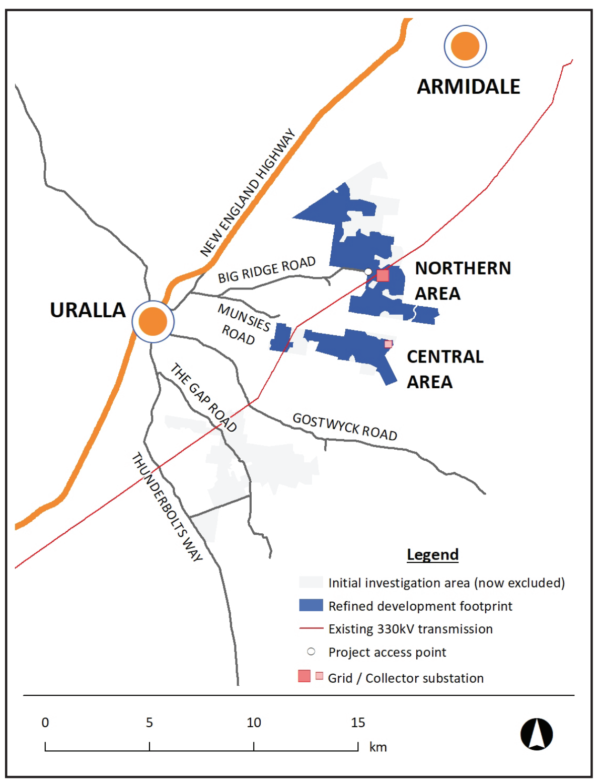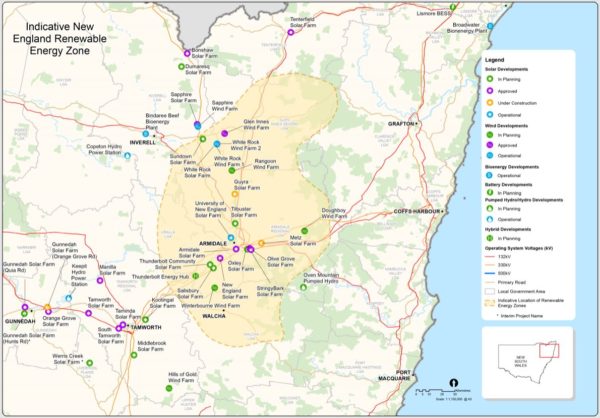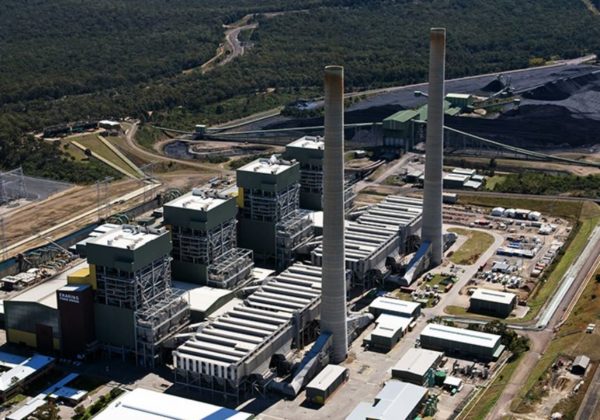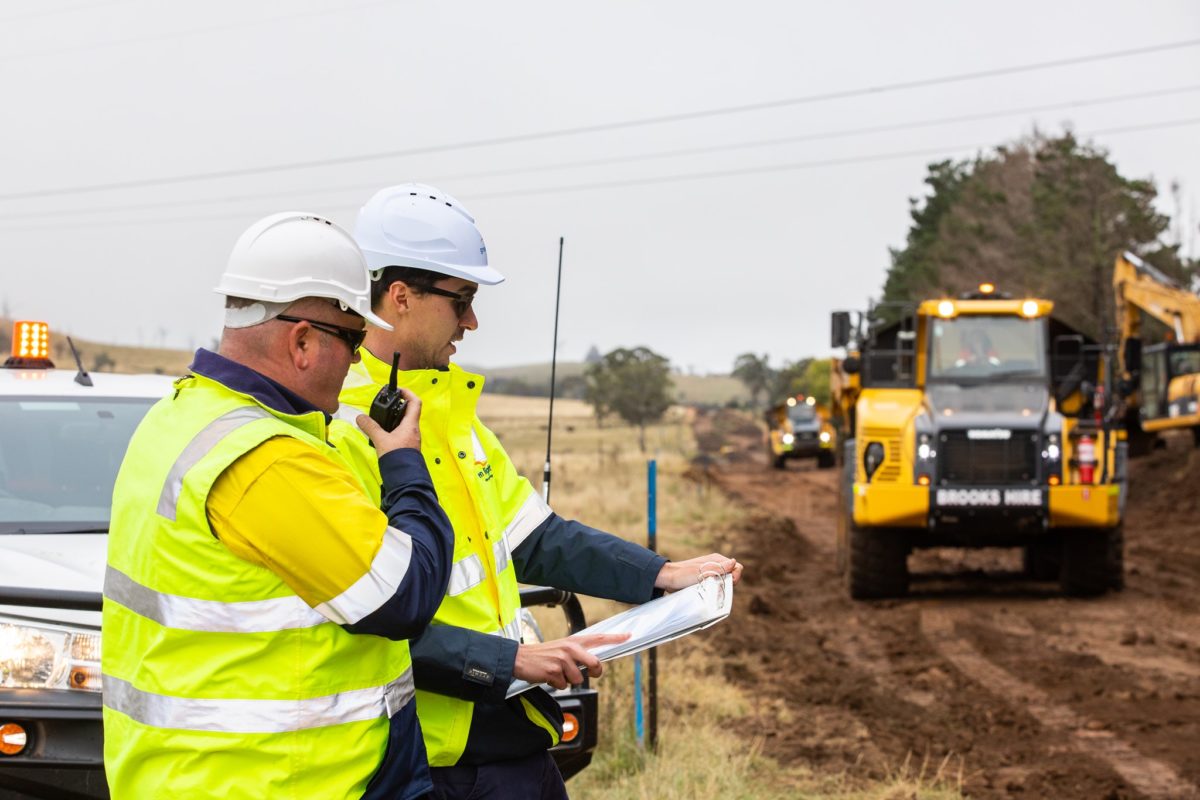The first of two 150 tonne electricity transformers has been trucked in to the New England Solar Farm site near Uralla, with the second to arrive next Sunday.
Developed by UPC/AC Renewables Australia, a joint venture between UPC Renewables and AC Energy, the $768 million project will eventually see a 720MW solar farm colocated with a 50MWh battery. The lithium-ion battery could eventually grow to a capacity of 400MWh.
Construction of the first stage of the solar farm, 400MW, is already underway, including the installation of the tracking system, perimeter fencing and the substation – to which the transformers belong.

Image: UPC\AC Renewables
Responsible for transferring the solar farm’s energy into the national electricity network, the transformers were supplied by German manufacturer Siemens and will be fitted by MegaVolt. The project’s construction director Tim Greenaway described the deliveries as a “major milestone.”
The mega project reached financial close in February last year and work started just a month later in March, 2021.
Two more large deliveries are expected to reach the site over the next month, including the prefabricated building structures containing the switch and control rooms.
Regional transformation
The New England Solar Farm’s two solar fields sit within the area of the New England Renewable Energy Zone (REZ), though the project was planned and had connection to transmission approved by TransGrid before the 8GW REZ was announced in July 2020.
Once completed, the project will produce around 1,800GWh of electricity per annum, helping plug the gap left by the region’s rapidly closing coal stations.

Image: NSW Government
On Friday, AGL shut off the first of Liddell’s four coal fired turbines, signalling the beginning of the end for the plant which will retire this year.
While the Liddell closure has been looming for quite some time, Origin shocked the nation and especially the historic coal county of northern NSW when it announced in February that it would be retiring its nearby Eraring coal plant in 2025 – bringing the closure date forward to the minimum notice period.
Eraring is Australia’s coal fired station and while Cornwall Insight Australia’s principal consultant Ben Cerini estimates there may already be enough solar latent in the region to cover the massive exit, the network will require significantly more dispatchable power (such as that from battery storage) as well as additional transmission infrastructure and the acceleration of the renewable energy zone developments to plug the gap.

Image: NSWDPE
This content is protected by copyright and may not be reused. If you want to cooperate with us and would like to reuse some of our content, please contact: editors@pv-magazine.com.









2 comments
By submitting this form you agree to pv magazine using your data for the purposes of publishing your comment.
Your personal data will only be disclosed or otherwise transmitted to third parties for the purposes of spam filtering or if this is necessary for technical maintenance of the website. Any other transfer to third parties will not take place unless this is justified on the basis of applicable data protection regulations or if pv magazine is legally obliged to do so.
You may revoke this consent at any time with effect for the future, in which case your personal data will be deleted immediately. Otherwise, your data will be deleted if pv magazine has processed your request or the purpose of data storage is fulfilled.
Further information on data privacy can be found in our Data Protection Policy.